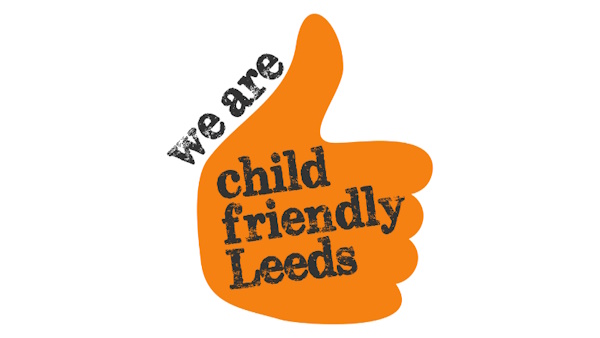What is child sexual exploitation
Child sexual exploitation (CSE) is a form of sexual abuse where an individual or group takes advantage of an imbalance of power to coerce, manipulate, or deceive a child or young person into sexual activity for something the victim needs or wants, such as attention, affection, money, alcohol or drugs, or somewhere to stay, and for the advantage of the perpetrator(s) or facilitator(s). CSE does not always involve physical contact; it may take place through the use of technology or consist of a combination of both.
CSE can occur in seemingly consensual relationships and the child or young person may think of or describe their abuser as their friend, boyfriend or girlfriend. It is also important to be aware that although a child may maintain contact with someone about whom there may be concerns, it does not mean that the relationship is not exploitative.
Perpetrators can be male or female, children or adults. Those who abuse will control and manipulate; they may do this through the use of enticement or violence.
Child sexual exploitation can range from opportunistic to organised abuse and be a one-off occurrence or involve abuse over a prolonged period of time. Generally, there will be a form of power imbalance in favour of those perpetrating the abuse. This may be based on one or more factors, such as:
- age
- gender
- sexual orientation
- cognitive ability
- physical strength
- status
- access to economic or other resources
Any child or young person from any background, including 16 and 17-year-olds (who can legally consent to sexual activity), can be a victim of CSE. Even where there is some form of exchange (money, gifts, etc.), child sexual exploitation is never the victim’s fault, and remember that CSE happens to boys too.
What we all need to do
We all have an important role to play in protecting children and young people from sexual exploitation. We can do this through:
Identifying
Children and young people rarely self-report CSE, so it is important that we are aware of vulnerability and risk factors and indicators (see next below).
Acting
Contact the Duty and Advice Team to discuss concerns regarding a child being at risk of or experiencing CSE. If a child is believed to be at risk of immediate harm, ring the police on 999.
Partner agencies can complete the Risk Identification Tool using the Practice Guidance available from the Leeds Safeguarding Children Partnership (LSCP) website.
The Multi-Agency Child Exploitation (MACE) Framework can be referred to; there is further information about this available on the LSCP website.
Vulnerability and Risk Management
Where it is recognised that a child is at risk, has been targeted, or is being sexually exploited, services should work together to manage the child’s vulnerability and risk. This is usually coordinated by the Children’s Social Work Service and involves multi-agency partnership working.
Disruption
Practitioners, businesses and communities should work in partnership to disrupt perpetrator activity. Effective sharing of information and intelligence is vital to help the police and services working with children and adults to disrupt exploitation and secure prosecutions.
Vulnerability and risk factors and indicators to consider
Some groups of children are particularly vulnerable to CSE. These include:
- children with learning difficulties or disabilities
- children looked after
- care leavers
- migrant children
- unaccompanied asylum-seeking children
- homeless children
- children who run away from home or care
- children who are missing from education
Certain experiences can contribute to children being more susceptible to child sexual exploitation, such as:
- having prior experience of neglect, physical or sexual abuse
- experience of domestic violence, parental substance misuse, or parental mental health problems
- lacking a safe or stable home environment
- being economically disadvantaged
- a recent bereavement or loss
- social isolation or social difficulties
- exposure to adult sex work in their family or network
When considering a child’s vulnerability and risk, indicators to consider include:
- missing from home, care or school
- running away
- leaving home or care without explanation or persistently returning late
- unexplained absences from school, college or work
- secrecy about whereabouts, friendships, significant relationships or new possessions
- concerning use of the internet or social media or excessive receipt of messages or phone calls
- self-harm or significant changes in emotional wellbeing
- evidence or suspicions of physical or sexual assault
- evidence of new possessions, extra money or access to alcohol, substances or access to other non-tangible items such as taxi fares, access to events, eating out without plausible explanation
- gang-association or social isolation
- new offending or anti-social behaviour or increased misuse of substances
- significant relationships with controlling individuals or groups; and Concerning sexualised behaviour
CSE rarely occurs in isolation of other vulnerability and risk factors. It is also often linked to other types of criminal activity such as:
- child trafficking
- domestic abuse and violence
- interpersonal violence and abuse in intimate relationships
- drug-related offences
- gang-related activity
- modern-day slavery
Absence of any of the potential indicators of CSE does not mean that a child is not experiencing abuse and exploitation. Assessing if a child is at risk of or is experiencing CSE requires a full and holistic assessment of all concerns.
Key contacts and more information
Duty and Advice tel: 0113 376 0336 (practitioners) or 0113 222 4403 (public).
Out of hours for practitioners, Children’s Emergency Duty Team tel: 0113 535 0600.
Read national guidance: Child Sexual Exploitation - definition and guide for practitioners, or for more information, see the Child Sexual Exploitation pages on the Leeds Safeguarding Children Partnership website.
Child exploitation practice guidance on the Leeds Social Work Procedures website.
Printable version
